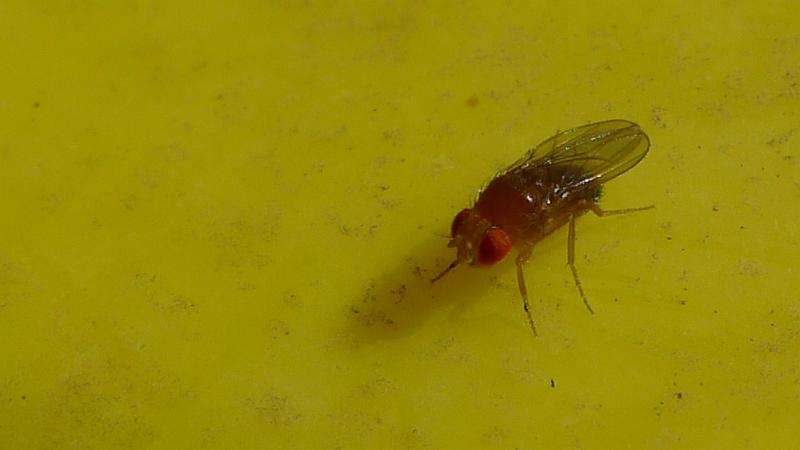Stop eating! You are full

Researchers have identified a molecule sent by fat cells to the fly brain that senses when they have had enough food and inhibits feeding, according to a study publishing March 28 in the open access journal PLOS Biology by Walton Jones of the Korea Advanced Institute of Science and Technology in Daejeon, and colleagues.
Fat is the primary long-term energy storage molecule in animals, and the control of fat levels is critical for survival. In mammals, the hormone leptin induces eating in response to fat loss, but so far, no corresponding signal has been identified, either in mammals or any other animal, that inhibits eating in response to fat gain. Because fruit flies replicate many of the feeding-related regulatory mechanisms and genes known to operate in humans, they make a good model for the search for such an inhibitory signal.
To conduct their search, the authors focused on short non-coding RNAs or microRNAs, which are well-known inhibitors of gene expression. They first searched for microRNAs that, when overexpressed in fat tissue, affected feeding behavior, and second for the gene targets of those microRNAs. They identified a microRNA called miR-iab-4, which increased feeding by more than 27%, and a target gene called purple, which was expressed in fat bodies.
Reducing purple expression enhanced feeding, suggesting its normal function was to inhibit it. Purple is known to be one of two fat-body enzymes that build a molecule called PTP, which is released by fat bodies and circulates in the fly brain. There, a third enzyme converts PTP into a well-known enzyme cofactor, called tetrahydrobiopterin (BH4). BH4 is required in the neurons that produce NPF, a neuropeptide that regulates feeding. The authors showed that loss of purple in the fat body, or loss of BH4 in neurons, led to increased release of NPF and increased feeding. Conversely, increasing BH4 in neurons reduced NPF release and decreased feeding. Finally, they showed that feeding flies a low-calorie diet reduced expression of the fat body enzymes that control BH4 production, and led to increased feeding.
The results in this study suggest that BH4 plays a key role in suppressing appetite in flies, and that PTP released from fat bodies delivers a signal to the brain indicating that energy stores are sufficient and that feeding can stop. While these results apply only to flies currently, the identification of this appetite-suppression mechanism will surely spur research into related pathways in humans.
"Our study indicates fat tissue sends a molecular signal to the fly brain to regulate feeding behavior," said Jones. "Further studies will be needed to determine if a similar system acts in mammals, and if so, whether it can be safely manipulated to help achieve weight loss, or gain, in people."
More information: Do-Hyoung Kim et al, A fat-derived metabolite regulates a peptidergic feeding circuit in Drosophila, PLOS Biology (2017). DOI: 10.1371/journal.pbio.2000532
Journal information: PLoS Biology
Provided by Public Library of Science



















